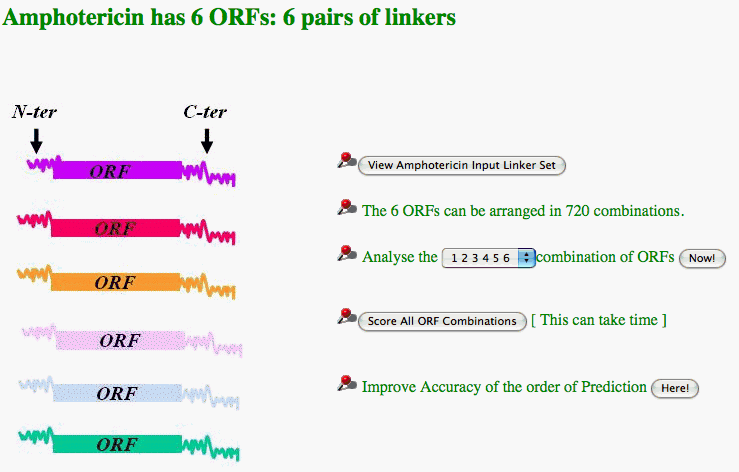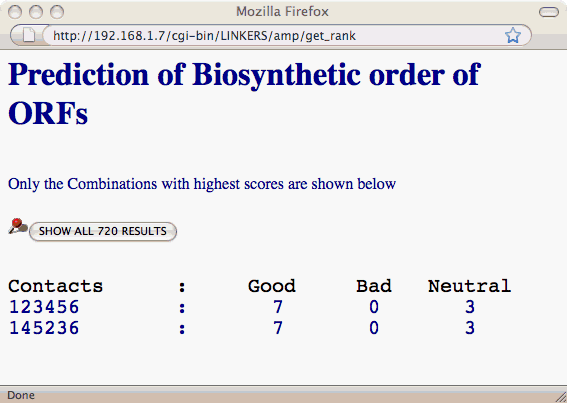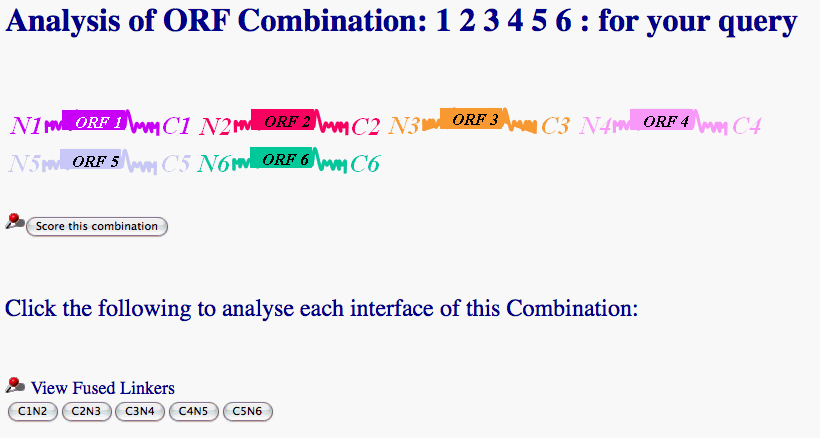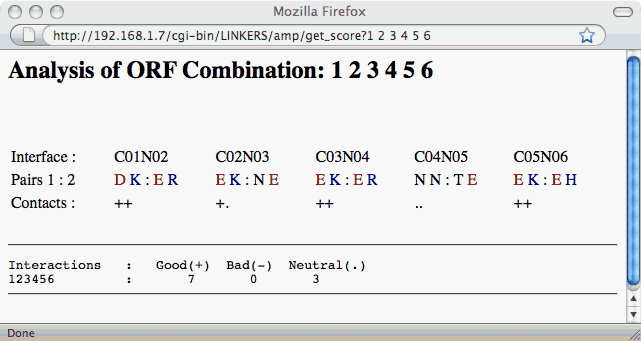 USING THE AMPHOTERICIN EXAMPLE TO STUDY THIS SITE
USING THE AMPHOTERICIN EXAMPLE TO STUDY THIS SITE
AMPHOTERICIN CLUSTER
This cluster has 6 ORFs
Each ORF has an N-terminus and a C-terminus
STEP 1

This is the initial page of results.
The first link allows the user to see the input linker pairs.
The second link enables an analysis of any one of all the possible combinations of the input ORFs.
The third link scores all possible combinations using the linker analysis (as described in manuscript) to predict the biosynthetic order of ORFs.
STEP 2

As can be seen here, clicking the third link shows that only two unique combinations of the six Amphotericin ORFs have the highest docking domain score. Note that the first predicted combination here is the actuali(experimentally characterised) native order of ORFs for Amphotericin biosynthesis. Further links on this page will allow the user to see the scores for all remaining combinations of 6 ORFs. All of the combinations can be explored by the user as shown below.
STEP 3
<

As can be seen here, clicking the second link allows the user to explore any unique combinations of the ORFs. The first link on this page scores this combination while the remaining links enable exploration of every interface on this combination.
STEP 4

As can be seen here, clicking the first link of the unique combination analysis page shows the four key residues at every interface in this combination. The page also scores each interface for good bad or neutral contacts which are then summed to get a score for the entire combination.
STEP 5

Clicking the last link of the first page allows the user to improve the accuracy of prediction based on known biological information such as the first and last ORFs of a given PKS cluster. This page lets the user narrow down the search space as well as the scoring and ranking process. It can save time in case of PKS clusters having many ORFs. As shown, the first and last ORFs are 1 and 6.
STEP 6

The 'hint' provided by the user lets the program find a different ranking order. As can be seen here, the hint has not changed the top ranking solution for Amphotericin. The best prediction remains the native combination.